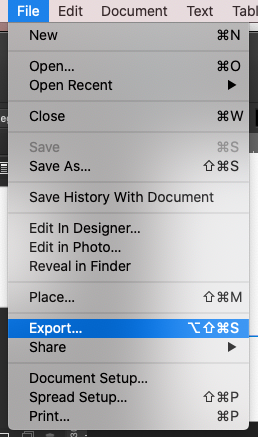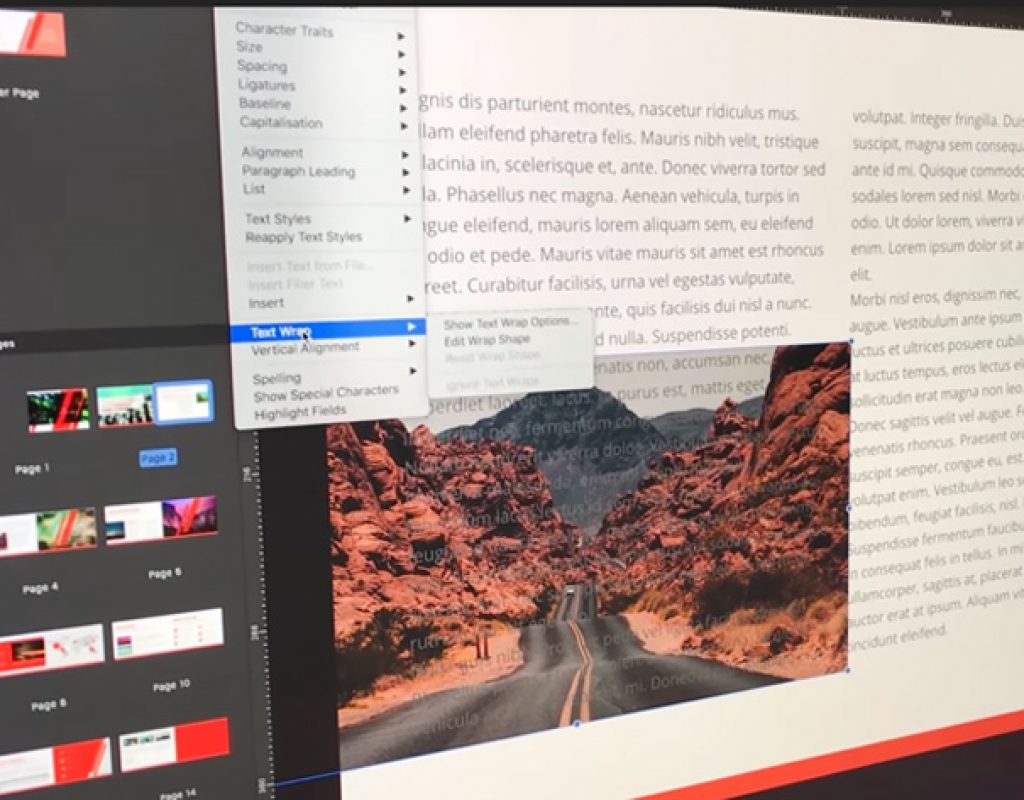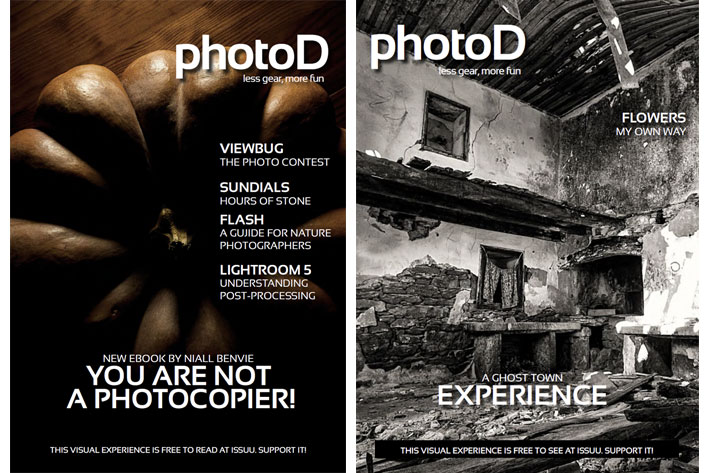Now, if you’re a photographer who likes to create eBooks or books, the DTP app is a must-buy, but Affinity Publisher has many more uses and I believe any professional, including videographers, who needs to create booklets, brochures, single page ads or any other promotional material should invest in. If you are ready to level up your low content book business by using professional publishing software, Affinity Publisher is one of the best choices. It is both affordable and powerful. In this course, you will learn how to use the most important features of Affinity for low content book creators. Write a book worth buying. There’s no point in publishing a book that’s not your best work. DOWNLOAD Scribble Medium #2 here or just grab the book and draw directly in it. My first full project with Affinity Publisher. The Affinity Publisher Beta was announced at the Affinity Live event a few months ago which also saw the surprise release of Affinity Designer for iPad. I was invited to the event and some of us attending really had no idea that the iPad version was been launched that.
I’m staring at a pile of promotional copies of the new Scribble Scrimmage book and it is NOW AVAILABLE on Amazon.com
If you’re not sure what Scribble Scrimmage is exactly then take a look at this quick pilot episode and subscribe here for more!

Get it? Nice.
If you are a fan of the Dr. Moku mnemonic apps then you already know how I like to find a new meaning in an abstract shape (Japanese characters, Arabic script etc)
Here are some examples of Scribble Medium #2. There are three levels of difficulty and each scribble has a number so you can keep track of them and play along as they appear in the game and online.
DOWNLOAD Scribble Medium #2 here or just grab the book and draw directly in it.
My first full project with Affinity Publisher
The Affinity Publisher Beta was announced at the Affinity Live event a few months ago which also saw the surprise release of Affinity Designer for iPad. I was invited to the event and some of us attending really had no idea that the iPad version was been launched that very night.
We thought they would announce just the date of release and showcase some of our work and ask us to do a demo or something but I was blown away to see it was actually live on the Appstore by the time we arrived in Serif HQ. Those boys move fast.
I have a list of books that I want to publish. Some are almost complete in terms of the assets but I have such an ingrained and justified dislike of Adobe InDesign that I could happily wait for Serif to release Affinity Publisher no matter how long it took.
Seriously, InDesign makes me feel ill.
Look at this shocking example of how you will find THREE modal/UI styles in the very same app! UGHH!!! A point which I brought up during my talk about my thing for Affinity during the summer. Things like that DRAIN your energy as your poor noggin has to juggle all this pointless cognitive nonsense. Affinity Publisher is dark, compact and humble with a tight UI.
The current Affinity Publisher Beta is a solid and usable app in my opinion. It is missing the ability to add hyperlinks to documents which requires a manual workaround but other than that I really can’t fault it. It comes with the disclaimer of course that it should not be used for important production work. None of my work is important so why not start sending stuff off to the printers? Bwah!
The process
If you are familiar with the concepts of a ‘desktop publishing’ app (hate that phrase) you will have absolutely no problem learning how to use Affinity Publisher in one day.
The Scribble Scrimmage Book is 117 pages but I started a document with just 5 pages and made the designs for each section.
Then I created Masters from each design, added new pages, selected them and then applied the new Master designs to them. I needed the page numbering to restart between Easy, Medium and Hard so I just created a new Section for each one.
Then it was as easy as copying and pasting assets in from Affinity Designer and making things directly in Publisher. In the current build, you cannot switch between the other Affinity apps but that feature will definitely be in the final version.
Then a plain old export to pdf for the interiors and a cover design in Affinity Designer and we are done.
All in all it was a handy first project to complete but I have already started a fiendishly complicated one.
So anyway, DOWNLOAD Scribble Medium #2 here or get the book here and see what you can come up with!
Create Your Own Book Cover in Affinity Publisher
A Single eBook Cover, or the Complete Paperback Cover.
In addition to the standard eBook cover as used on Kindle and others, you can design your Paperback, and Hardcover covers as well.
Adding the Spine, back cover, and Fly Leaf front and back are just a few simple steps extra.
Let’s Get Started…
- Set Up the Layout of Your Cover in Publisher

Begin by creating a cover for a paperback (softcover) book, with B‑format dimensions (5.06 x 7.81 inches [130 x 198 mm]) and a 16 mm spine. But I’ll add that tutorial later.
Note: You can adjust the width of the spine to suit your own purposes by using the Spread Properties (Page Tool) to adjust the width of the document later.
Step 1
Open Publisher and select New Document from the Welcome window, or go to File > New > Document.
DO NOT press OK yet to create the page.
Staying in the New Document window set the Type to Print and No. of Pages to 1, and uncheck Facing Pages. From the Page Preset drop-down menu select Custom…
Set the Width to 130 mm and Height to 198 mm.
If this is your first go at this, go to the little paper-stack icon to the right of Page Preset, and select Create Preset. Type ‘B-Format Paperback’ into the Name text box and click OK. Your setup will look like this. When you are finished setting up, your preset will be saved, and you can open a new document and apply the preset easily. This is the industry standard print size for a paperback. ‘B-Format Paperback’. Vlc download mac sierra. A good idea is to leave the preset creation until you complete all these steps, in Step 2 below, then save the preset just before you press OK.
DO NOT press OK yet to create the page.

Step 2
Still staying in theNew Document window, check the tabs to set the Margins to 8 mm on all sides, and set the Bleed to 3 mm on all sides. These are very much industry standards. Now Click OK.
This page is the correct size for the front of your cover only. If you are only making a front cover for an eBook for example, then that is all you need for the page setup. Though we will want to submit a whole cover to the printer, complete with spine and back cover, it’s a really good idea to design your front cover only at first. You can faintly see the Bleed, Margins, and Centre Guide in the image below.

We’ll use the Spread Properties Tool later in the tutorial to include the spine and back cover on the document. For now, let’s work on the front cover alone as it is.
From the left-hand Ruler drag a vertical guide out to 65 mm. This marks the center point of the front cover. You will need this when placing elements on the page later.
Step 2. Create Your Cover Backdrop
Adding the background art
Add a new Layer (Layers -> New Layer or Lower Right -> Add Layer)and click on the Layer 1 tag to Rename the layer as Image and click OK.
Select the Rectangle Frame Tool (F) and position your mouse in the main page area, drag to create an image frame that extends across the page, meeting the edge of the Bleed at the Left, Top, Bottom, and Right sides, as shown below.
Go to File > Place and select the image you want to use for the backdrop of your cover. Choose something that would work well as a wallpaper across the back of the page, with no significant features or people in it preferably, and also that is compatible with your genre at least, or your story.
Make sure the Photo in its Frame is selected as shown by the blue dots and frame around it. City of heroes mac download. Arrange the photo in the frame using the Properties icon in the top control panel.
The top option Scale To Max Fit is the one that will suit your image at this stage. Your image may require a different option. Experiment.
With the Picture Frame selected, select the Transparency Tool (wine glass) Set the Fill to White, Type as Radial and set the MidPoint to 50 %.It WILL fill the rectangle with White. Don’t panic. Maneuver the Gradient Slider into place as shown.
Check your image
You can see from the above images, that the original image is rather plain and unretouched. After applying a transparent white haze over it, it now presents a rather more mysterious image. The transparency is following the blue horizontal line from the left to the right. Its density is controlled by the slider and options in the little drop-down menu shown above
Let’s tidy up a little.
Even though we already have a gradient effect applied to the images any typography we apply to the cover will still probably get lost in the high contrast of the dark branches and white snow.
Return to the Layers panel and Lock the Image layers.
Time To Put in the Title, Author and Tagline
Click the Create New Layer icon at the bottom right of the panel. Click the default layer name and rename the layer as Front-Cover Artwork.
Select the Ellipse Tool and create an ellipse as shown, the full width of the frame. Position this centrally on the page, using the Guide as a reference position the top of the circle. Of course, you will create an ellipse that suits your own title. As you can see, I have not yet accurately positioned the ellipse within the guidelines.
With the ellipse shape selected, Select Transparency Tool (Wine Glass). Set the Type (upper left) to Radial, Fill to White, and then click on the white ellipse and move the Gradient Stop into position as shown below, so the gradient appears very soft. Adjust to suit your image.
Next Step
Select the ellipse shape and then Edit > Copy, Edit > Paste. It will paste over the top of the first circle – observe in the Layer Panel. Either hold Shift to resize the circle or edit the measurements, resizing the circle to a suitable smaller size, or simply drag it to one side and resize it.
Position this second shape at the top right corner of the page, as shown. We will be layering a tagline over this a little later.
3. Introduce Some Suitable Typography
Step 1
Go to the Layers panel and Select and Lock the Front Cover Artwork layer. Select the Add Layer icon and rename the layer Typography.
Step 2
We want to introduce three parts to the front cover text: the title, the author name, and a tagline. Let’s work on the title first.
First up, let’s select a typeface that’s going to work well on our Winter cover. Look for something that looks dramatic when set in All Caps; a strong sans serif will grab the reader’s attention. Here I’ve chosen Buckwheat TC Sans.
Select the Artistic Text Tool and type ‘Whispering’, set the Font to Buckwheat TC Sans, Size 40 pt,Tracking to 50 % and set the text in All Caps. Position the frame to the top left of the central white circle, at Y position 60 mm, or thereabouts. Set the color to black.
Step 3
Create a second larger text with the Artistic Text Tool. Type ‘Quilts’, set the Font to Buckwheat TC Sans, Size 60 pt, and set the text in All Caps.
Now we are ready to insert the image behind the text of the word QUILTS.
With the text highlighted, go to Layers> Convert To Curves.
With the text highlighted, Set the Colour to No Colour.
The text will become transparent.
In the Layers section, hold the Cmd key and select all the individual letters of the group now making up QUITS, as in this example., the fill set to No Colour. So, in fact, they do not display.
With all layers selected go to top navigator and Layer -> Convert to Picture Frame.
Affinity Publisher Free Trial
With all layers converted to Picture Frames, and keeping them all selected, go to File -> Place and find the file you want to use as the background of the text. In this case, I am using an image of quilts, or at least their colours.
Affinity Publisher Ebook
Select the image you are going to use, and it will place itself into the text automatically. It may take a moment to happen.

Because the individual letters are converted to Curves first, this allows you to alter the text in any way you wish.
Create any other text frames you need the same way. Add your taglines.
Lock all the layers.
Following this tutorial, I will add the full Printed Paperback Cover, and later, the Hardcover. If people want it.
So as you begin to design your cover, remember to keep it simple. The best covers only hint at the story. They don’t tell it on the front cover. Keep your cover true to the genre you are writing in. Spread your text out. For example – QUILTS is too tightly packed. It needs to be spread out. Free dvd label software for mac.
Your First Cover is like your First Draft of your book.
Feel free to ask questions, leave feedback, positive of course if you would. Like the page or site. Follow me on Twitter and probably Instagram.
The book “Whispering Quilts” will be released about Mid-Winter I believe, by a new author, R.M. Tappin. Watch for the book on Amazon and others.
Feel free to look for my books on Amazon, iBooks, Kobo, LuLu in eBook, Paperback and Hardcover formats.
Criticisms should be accompanied by a case of good wine.
